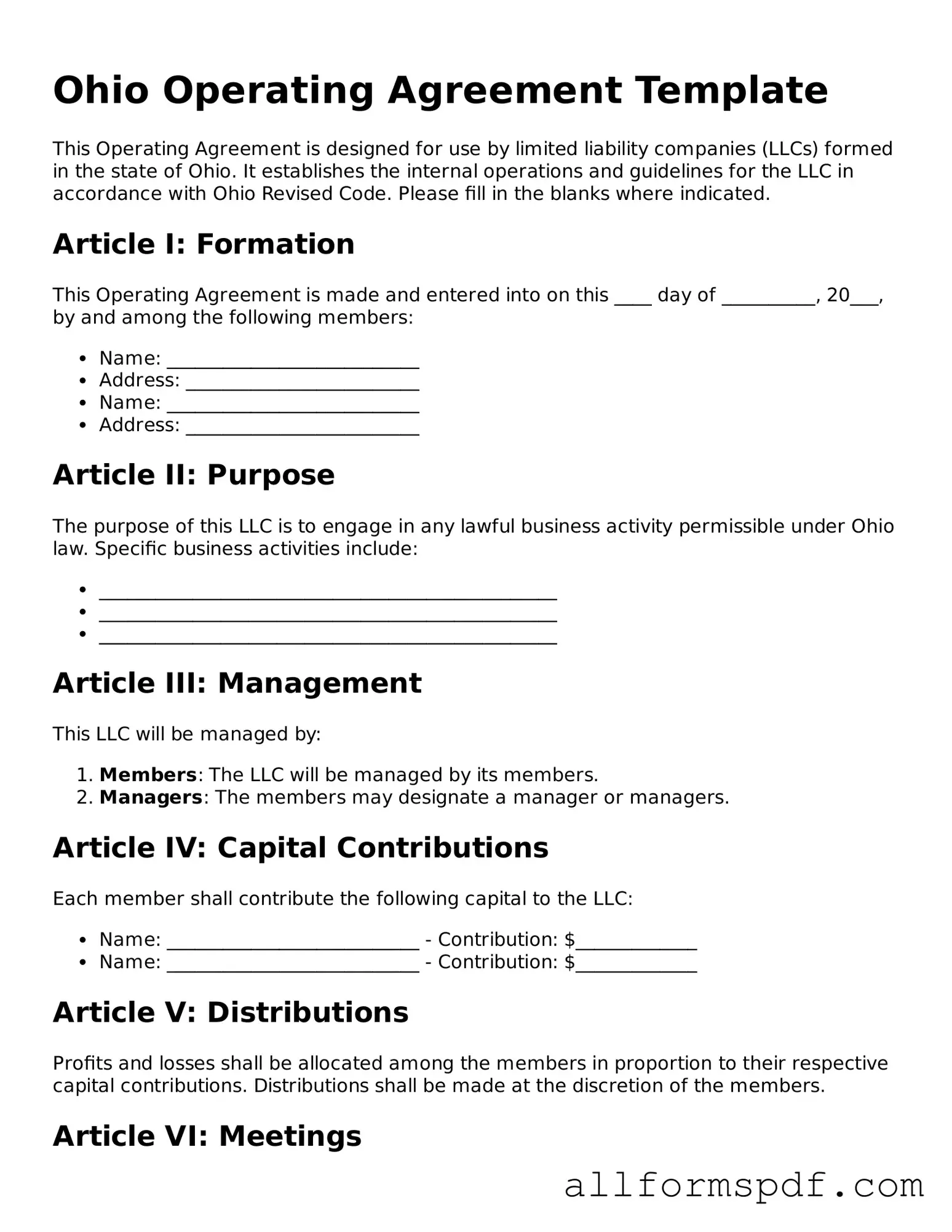When filling out the Ohio Operating Agreement form, many individuals encounter common pitfalls that can lead to complications down the line. One frequent mistake is failing to clearly define the roles and responsibilities of each member. Without this clarity, misunderstandings may arise, causing friction among members and potentially jeopardizing the business's success.
Another common error involves neglecting to outline the management structure of the LLC. This section is crucial as it determines how decisions will be made and who has the authority to make them. If this is not specified, it can lead to confusion and disputes, particularly when important decisions need to be made.
Additionally, some people overlook the importance of including a provision for profit and loss distribution. This section should detail how profits and losses will be shared among members. Omitting this information can lead to disagreements later, especially if the business becomes profitable.
It’s also essential to address the procedures for adding new members or removing existing ones. Many individuals forget to include these provisions, which can create challenges if the membership needs to change. A clear process ensures that all members understand how changes will be handled and helps maintain harmony within the group.
Another mistake is failing to update the Operating Agreement as the business evolves. As circumstances change, the agreement should reflect those changes. Ignoring this can result in outdated information that no longer aligns with the business's current operations.
Finally, many individuals do not seek legal advice or review the agreement with a professional. While it might seem straightforward, having a knowledgeable person review the document can help identify potential issues and ensure that the agreement complies with Ohio law. Taking this step can save time and trouble in the future.
